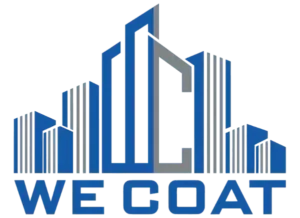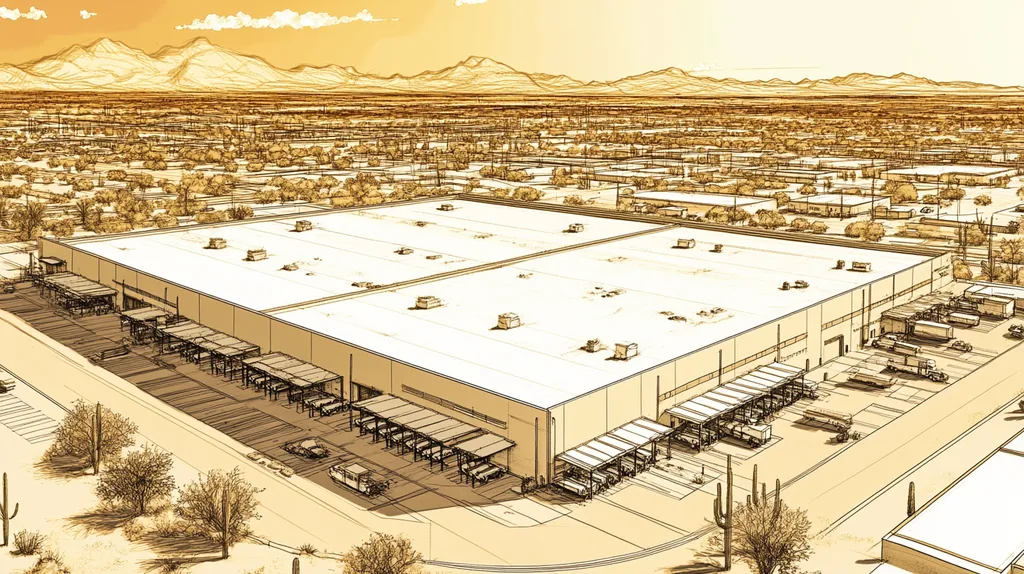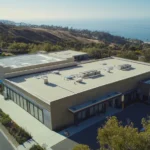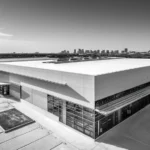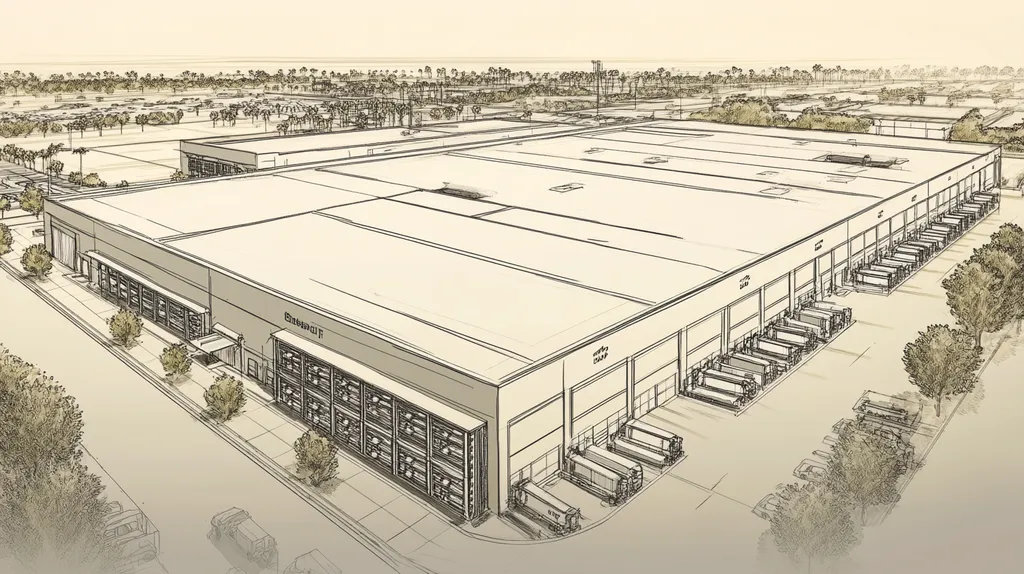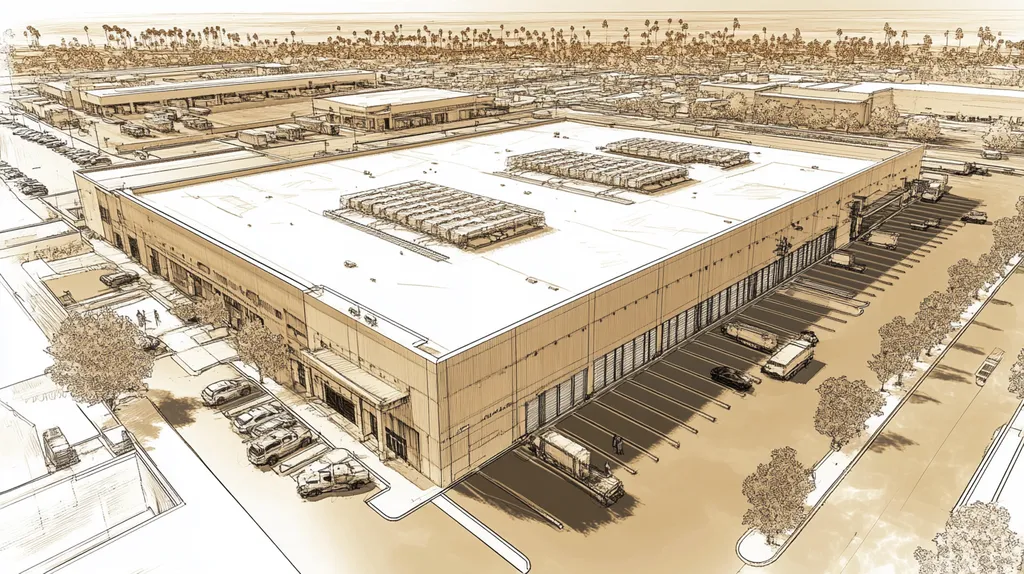When rooftop equipment fails on industrial buildings, the consequences can be devastating – think production shutdowns, skyrocketing energy costs, and repair bills that can reach six figures. Studies show that poorly maintained rooftop systems reduce building efficiency by up to 40% while shortening equipment life by half.
From HVAC units to electrical systems, every piece of rooftop equipment requires specific maintenance and repair protocols to keep facilities running smoothly. Yet many property managers lack a clear roadmap for addressing these critical needs.
This comprehensive guide breaks down the essential components, implementation methods, and optimization strategies needed to protect your rooftop investments and maximize operational efficiency.
SECTION 1: FUNDAMENTAL CONCEPTS
Rooftop equipment is the unsung hero of industrial facilities, playing a pivotal role in their overall performance. When this equipment is neglected, the consequences can be steep—think costly downtime and potential safety hazards. Malfunctioning HVAC units, for instance, can lead to poor indoor air quality, dampening employee productivity. To effectively manage a facility, it’s crucial to understand the types of equipment in use, how they interact with the roof, and the necessary safety protocols.
Understanding Rooftop Equipment Types
Industrial roofs host an array of equipment, each with a distinct function. From HVAC units to exhaust fans and electrical conduits, understanding this equipment is vital for effective repairs and maintenance. Each type requires careful attention to avoid service interruptions.
Regular inspections of HVAC systems, for example, can ensure they run smoothly and efficiently. Ignoring maintenance can spike energy costs and shorten equipment life. By identifying the correct types of equipment, facilities managers can plan maintenance and repairs more effectively.
Moreover, knowing the function of each unit allows for focused maintenance strategies. This proactive mindset can prevent sudden failures that could disrupt operations and inflate repair budgets. A solid grasp of rooftop equipment types lays the groundwork for managing repairs effectively.
In short, knowing the various types of rooftop equipment is essential. This insight empowers informed decisions on maintenance, repair, and the long-term integrity of both the roof and its vital equipment.
Roof-Equipment Interface Considerations
The interface between rooftop equipment and roofing systems is a vital zone that often gets overlooked. When installations are improperly done, or when maintenance is deferred, problems like water infiltration can arise. For instance, unsealed gaps around ductwork could allow water to seep in, endangering both the roof and the equipment.
To ward off these issues, routine inspections of the roof-equipment interface are crucial. Checking flashings, seals, and support systems ensures a robust connection that mitigates moisture risks.
Constant upkeep of these interfaces not only protects the roof but also prolongs its life. Tackling small issues as they occur can save significant repair costs later on. It’s vital for facilities managers to incorporate these checks into their regular maintenance schedules.
In essence, remaining vigilant about the roof-equipment interface is key. When this connection is compromised, the repercussions can ripple across operational efficiency and financial stability.
Basic Safety Protocols
When it comes to rooftop work, safety is paramount. Each year, numerous accidents occur due to unsafe practices on industrial roofs, underscoring the need for solid safety protocols to protect personnel and equipment.
Training rooftop staff is essential to fostering a culture of safety. They should be knowledgeable about the use of safety harnesses, ladder inspections, and identifying dangerous situations. Ignoring safety can lead to serious injuries or worse.
Additionally, the use of protective gear, such as helmets and non-slip footwear, serves as an added layer of security during repair tasks. Facilities managers should regularly revisit safety practices to uphold compliance and ensure a safe workspace.
In conclusion, embracing safety protocols is non-negotiable for rooftop operations. By nurturing a safety-first approach, facilities can significantly cut down on risks and maintain a safer environment for everyone involved.
SECTION 2: SYSTEM COMPONENTS
Maintaining rooftop equipment isn’t just a good idea; it’s absolutely essential for ensuring the efficiency and longevity of industrial roofs. Neglected systems like HVAC units, drainage solutions, and electrical setups can lead to costly downtime and extensive repairs. In fact, the National Roofing Contractors Association highlights that a lack of proper maintenance can cut a roof’s lifespan by up to a staggering 25%. This section will illuminate the critical components of rooftop systems and what repairs are necessary to keep them running like a well-oiled machine.
HVAC and RTU Components
Every industrial facility relies heavily on its HVAC system to keep indoor conditions comfortable and safe. Rooftop units (RTUs) brave the elements daily, making them prone to wear and tear. Routine inspections are indispensable for spotting issues like leaks, rust, and worn seals before they escalate.
When problems are ignored, systems can work inefficiently, leading to a surge in energy costs. Take, for instance, an RTU chugging along at only 70% capacity—this inadequacy can send energy bills skyrocketing. Therefore, property owners should stay on top of repairs or plan for replacements based on the condition of HVAC components.
Regular maintenance tasks include checking air filters, cleaning condenser coils, and making sure air ducts are properly insulated. These measures not only enhance performance but also prolong the lifespan of RTUs.
Moreover, if HVAC components aren’t well-maintained, they can cause excess strain on the roof underneath. Adequate flashing and weatherproofing around these units are imperative to prevent water intrusion that can gradually damage the roof structure over time.
Drainage and Gutter Systems
Proper drainage systems are your roof’s best friend against standing water, which can wreak havoc on industrial rooftops. Issues like clogged gutters or downspouts can lead to serious consequences, including leaks and structural damage. Even worse, pooling water adds weight, increasing the risk of sagging and significant stress on the roof.
Conducting regular inspections of drains and gutters is a proactive way to mitigate these risks. Clearing out debris ensures there’s a free flow for water, helping to prevent costly damage and extend the roof’s lifespan.
Installing mesh screens or flashing can further decrease debris buildup in gutters. But remember, regular checks are essential to avert blockages that may cause overflow during heavy rainfall.
Additionally, investing in modern gutter systems can improve drainage efficiency. Updating outdated materials and designs can prevent many problems associated with older systems, leading to even greater roof longevity.
Electrical and Control Systems
The efficiency of rooftop equipment is often tied to intricate electrical and control systems. If these systems falter, it can disrupt not only HVAC performance but also safety measures and energy management. Thus, regular electrical inspections are key to catching potential issues before they become full-blown disasters.
Outdated or broken control systems can hinder HVAC units, forcing them to overwork. This not only inflates energy costs but can also shorten equipment lifespan.
To promote optimal operation, property owners must ensure that electrical connections are tight and free from corrosion. Regularly testing electrical components can help catch failures early and prolong the life of rooftop systems.
Consider upgrading to smart control systems for added benefits. These modern technologies enhance operational efficiency and allow for real-time monitoring, tackling issues before they escalate into significant repairs.
SECTION 3: IMPLEMENTATION METHODS
Repairing rooftop equipment on industrial roofs isn’t just a task—it’s a necessity that can save facilities from costly disasters. When these systems go unchecked, the financial implications can be staggering, with budget overruns reaching up to 30%. Therefore, it’s vital to pinpoint and execute effective repair methods that maintain the integrity of the roof and the longevity of vital equipment.
Conducting Thorough Roof Inspections
Regular roof inspections are the frontline defense against potential issues that can cause major headaches. These inspections should happen at least twice a year and immediately following severe weather. Spotting problems like punctures or aging seams early can prevent headaches—and heavy expenses—later on.
Embracing technology can supercharge the inspection process. Drones and infrared imaging offer a bird’s-eye view of the roof, identifying hidden issues like thermal anomalies that signal moisture seepage. Maintaining meticulous records during inspections only adds to the benefits, empowering property owners to track the roof’s health over time.
After an inspection, it’s crucial to prioritize repairs based on urgency. Leaks or damage affecting essential equipment should take center stage. Quick action on these issues can drastically reduce long-term costs and keep operations running smoothly.
Incorporating a structured maintenance plan inclusive of regular inspections can significantly prolong the lifespan of rooftop systems. Equipping staff with the knowledge to spot early signs of wear leads to proactive measures that preserve roof integrity.
Identifying and Addressing Leaks
Leaks are like uninvited guests—if left unchecked, they can cause serious disruptions. Minor leaks can snowball into major problems that jeopardize the entire rooftop setup. Regularly checking seals and flashings is essential in catching moisture entry points before they wreak havoc.
For minor leaks, products like spray foam and sealants are heroes. These quick fixes can extend the lifespan of roof equipment without major overhauls. However, when leaks grow larger, replacing damaged components may be unavoidable.
To stay ahead of the game, incorporating moisture detection systems is a savvy move. These smart systems provide real-time alerts on leaks, empowering facility managers to react swiftly. Enhancing drainage solutions is also key; preventing ponding water reduces the likelihood of leak formation.
By implementing a routine leak assessment strategy, facilities can not only protect the roof but also boost the efficiency of rooftop operations. This constant monitoring translates to smarter resource management and long-term cost savings.
Replacing Damaged or Missing Materials
Routine assessments often reveal the need for damaged or missing roofing materials to be replaced; delaying these repairs can invite bigger troubles. Replacing compromised shingles, membranes, or flashings swiftly is vital for preventing water intrusion and safeguarding rooftop equipment.
Opting for high-quality materials during replacements is a wise investment. Choosing materials tailored for specific environmental conditions enhances overall roof durability and cuts down on future repair needs.
Engaging certified contractors for these replacements ensures that materials are installed correctly and meet industry standards. Documentation of these repairs will serve as a valuable future reference for maintenance needs.
Additionally, conducting a cost-benefit analysis before making replacements empowers property owners to make informed decisions. This thoughtful approach weighs long-term advantages against initial costs, steering facilities toward sound financial choices.
SECTION 4: MAINTENANCE REQUIREMENTS
Keeping rooftop equipment in tip-top shape is not just a good practice; it’s essential for a thriving industrial facility. Neglecting regular maintenance can lead to a tidal wave of costly repairs and even complete equipment failures. Research shows that infrequent upkeep can cut the lifespan of rooftop HVAC systems by as much as 50%. This section highlights the significance of routine cleaning, thorough inspections, and precise equipment calibrations to optimize performance and keep operational costs in check.
Regular Cleaning and Inspection Schedules
Regular cleaning and inspection practices serve as the frontline defense against rooftop equipment failures. Dirt, debris, and grime can pile up on units, hampering their efficiency and potentially leading to costly breakdowns. Implementing a cleaning schedule every three to six months can help prevent these headaches.
Inspections should be part of these cleaning routines, with a keen eye toward signs of wear and tear. Using photographic documentation can aid in monitoring changes over time, enhancing both equipment efficiency and the lifespan of the roofing system itself.
In addition to scheduled cleanings, property managers need to adapt to seasonal challenges. Autumn leaves and winter snow accumulation can create distinct hazards that require tailored cleaning strategies to keep operations running smoothly.
Skipping this vital maintenance phase can result in clogged filters leading to mechanical shutdowns, disrupting productivity and inflating costs. Therefore, integrating these practices into everyday operations is vital.
Checking for Damage and Malfunctions
Conducting routine checks for damage and malfunctions can save facilities from bigger problems down the line. A detailed examination should cover all equipment connections, fasteners, and seals that may weaken over time. Even small leaks can grow into significant issues, risking the integrity of the entire structure.
Moreover, catching malfunctions early allows for timely repairs, keeping daily operations uninterrupted. Many property owners overlook the power of vibration analysis in HVAC systems, which can indicate potential failures before they escalate.
Embracing digital monitoring tools can streamline this process. These technologies provide real-time alerts, enabling facility managers to act quickly on any issues. This proactive strategy decreases downtime and enhances the overall reliability of rooftop equipment.
Consistent assessments not only boost efficiency but also can lead to energy savings. Well-maintained rooftop systems can save as much as 30% on energy bills. Addressing issues in a timely manner ensures those savings are maximized.
Calibrating Thermostats and Controls
Calibrating thermostats and controls is an aspect of rooftop equipment maintenance that often gets overlooked but is absolutely crucial. Poor temperature regulation can lead to wasted energy and increased operational costs. Unchecked spikes in energy consumption can take a significant toll on the budget.
Regular calibrations ensure that systems operate at peak efficiency, effectively meeting operational needs. A simple inspection can involve checking sensor accuracy and the equipment’s cycling frequency to ensure it works as it should.
Property managers should also keep software related to control systems updated. Outdated systems may introduce vulnerabilities and inefficiencies, impacting temperature management and scheduling negatively. Regular updates align equipment with current best practices.
Implementing seasonal calibration processes can also address varying weather conditions. Adjusting settings according to expected usage during different seasons maximizes energy efficiency year-round. This careful attention significantly contributes to sustaining reliability and protecting budget integrity.
SECTION 5: PERFORMANCE METRICS
In the fast-paced world of commercial roofing, performance metrics aren’t just numbers on a spreadsheet; they’re the lifeblood of rooftop equipment management. Keeping a close eye on energy efficiency, maintenance costs, and system reliability can mean the difference between thriving operations and financial pitfalls. For instance, even a slight drop in energy efficiency can snowball, leading to dramatically higher utility bills over time. Thus, measuring and monitoring these vital statistics empowers facility managers to make well-informed decisions that enhance operational performance and protect their investments.
Monitoring Energy Efficiency
Energy efficiency is a performance metric that demands vigilant attention on industrial rooftops. Rooftop units (RTUs) can waste significant energy when they’re not functioning optimally, leading to higher utility bills and increased environmental impact. By employing energy management systems, property owners can track consumption in real-time, detecting unusual spikes that may signal equipment malfunctions.
Regular energy audits reveal opportunities for system optimization. For example, if an outdated unit is using more energy than necessary, an upgrade could be a game changer. While there’s an initial investment, energy-efficient systems pay off with savings that can far exceed operational costs over their lifetime.
Utilizing data analytics tools helps facilities managers measure efficiency metrics across various systems effectively. These insights facilitate informed decisions about maintenance schedules and upgrades. Monitoring energy efficiency is not just good practice; it’s an essential strategy that enhances sustainability and boosts the overall value of the facility.
Tracking Maintenance and Repair Costs
Keeping tabs on maintenance and repair costs is crucial for gauging the financial health of rooftop systems. While regular maintenance can serve as a shield against costly repairs, failing to track these expenses invites unexpected financial burdens. It’s essential to document routine checks, emergency repairs, and any replacements made over time.
Analyzing historical cost data helps identify trends and suggests budget adjustments. For example, if a particular unit frequently breaks down, it may be wiser to replace it rather than continue spending on patch jobs. Armed with a clear understanding of these costs, property owners can better anticipate future maintenance expenses.
Adopting a proactive maintenance approach can significantly cut costs, as well-maintained systems are more efficient and durable. Skipping regular tracking can lead to sudden spikes in repair bills, jeopardizing financial stability. Thus, clear visibility into maintenance costs enables more effective resource allocation and enhances overall operational efficiency.
Evaluating System Reliability
System reliability is a vital performance metric that impacts the effectiveness of rooftop equipment. Regular assessments of failure rates and repair needs provide critical insight into equipment performance. High failure rates can disrupt operations, resulting in costly downtime.
Implementing reliability-centered maintenance strategies enhances performance by focusing on critical components. Facilities managers can prioritize resources to areas that have the largest effects on operations, which often leads to improved reliability and fewer costly interruptions.
Gathering performance feedback from operators enriches the reliability assessment process. This collaboration can uncover patterns that data alone might miss and fosters a culture of vigilance. Furthermore, monitoring long-term reliability metrics, like mean time between failures (MTBF), can guide future equipment purchases.
Ultimately, understanding system reliability is not just about minimizing downtime; it’s a pathway to optimized operational efficiency, ensuring a seamless flow in production processes.
SECTION 5: PERFORMANCE METRICS
In the bustling world of industrial roofing, keeping a pulse on performance metrics is not just smart; it’s essential for thriving operations. Energy efficiency, maintenance costs, and system reliability are key performance indicators that directly impact the bottom line. For instance, even a minor dip in energy efficiency can result in significantly inflated operational expenses over time. That’s why establishing clear and actionable metrics is crucial for making informed decisions that drive success.
Monitoring Energy Efficiency
Energy efficiency reigns supreme as a performance metric that demands vigilant attention on industrial rooftops. When rooftop units (RTUs) are not functioning optimally, they waste energy, leading to skyrocketing utility bills and increased environmental impacts. By implementing energy management systems, property owners can monitor consumption in real-time, swiftly identifying unusual spikes that could signal equipment issues.
Conducting regular energy audits unveils opportunities for system optimization. For example, outdated units may consume more energy than necessary, highlighting the importance of timely upgrades. While the initial investment might seem daunting, energy-efficient systems often yield remarkable savings that far outweigh operational costs over their lifespan.
Utilizing data analytics tools aids in effectively measuring efficiency metrics across various systems. With these insights, facilities managers can make informed decisions about maintenance priorities and necessary upgrades. Ignoring energy efficiency metrics can lead to persistent inefficiencies and unnecessary expenditures.
Incorporating energy efficiency as a core performance metric empowers property owners to champion sustainability. This dedication ultimately enhances the facility’s value and appeal in today’s environmentally conscious market.
Tracking Maintenance and Repair Costs
Keeping an eye on maintenance and repair costs is crucial for gauging the financial health of rooftop systems. Regular maintenance can ward off minor issues from escalating into costly repairs, but without diligent tracking, owners may find themselves facing unexpected financial burdens. Documentation should encompass routine checks, emergency repairs, and component replacements.
Analyzing historical cost data enables property managers to identify trends and anticipate future expenses. For instance, if a particular rooftop unit frequently requires repairs, it could be more cost-effective to replace it rather than continue patching it. By grasping these costs, property owners can proactively plan for building maintenance and avoid sudden financial shocks.
Embracing a proactive maintenance strategy can dramatically cut costs, as well-maintained systems not only operate more efficiently but also enjoy longer lifespans. Skipping routine tracking can lead to unanticipated spikes in repair bills, affecting financial stability.
A clear understanding of maintenance and repair costs enhances resource allocation, ultimately maximizing operational efficiency. This meticulous approach translates directly into better financial performance for any industrial facility.
Evaluating System Reliability
System reliability emerges as a critical performance metric influencing the effectiveness of rooftop equipment. Regular evaluations of failure rates and repair frequencies yield valuable insights into equipment performance. High failure rates pose risks that can disrupt operations and result in expensive downtime.
Implementing reliability-centered maintenance strategies can significantly boost performance metrics. By concentrating on essential components and their failure incidence, facilities managers can assign priority to the most impactful areas, resulting in improved reliability and minimized costly interruptions.
Gathering feedback on equipment performance from operators enriches the reliability assessment process. This collaboration can uncover trends and patterns that raw data might miss, fostering a culture of vigilance and proactive maintenance.
Long-term examination of reliability metrics, such as mean time between failures (MTBF), can guide future equipment purchasing decisions. Ultimately, understanding system reliability is not merely about reducing downtime; it’s a strategic pathway for optimizing operational efficiency and ensuring fluid production processes.
The Bottom Line
With industrial rooftop equipment failures costing facilities up to $100,000 in repairs and lost productivity, implementing a comprehensive maintenance and repair strategy isn’t optional – it’s critical for survival.
Studies show that properly maintained rooftop systems can extend equipment life by 40% while reducing energy costs by up to 30%.
From regular inspections and calibrations to tracking performance metrics, every aspect of rooftop equipment care plays a vital role in facility operations.
By embracing proactive maintenance protocols, upgrading aging systems, and leveraging modern monitoring technology, facility managers can protect their rooftop investments while optimizing operational efficiency.
The stakes are simply too high to leave rooftop equipment maintenance to chance – the future of industrial facilities depends on taking action today.
FREQUENTLY ASKED QUESTIONS
Q. What is rooftop equipment on commercial roofs?
A. Rooftop equipment includes HVAC units, exhaust fans, and electrical systems crucial for facility efficiency. Proper maintenance is essential for operational health, preventing costly downtime and safety risks due to malfunctioning equipment.
Q. How can I ensure my industrial roof’s HVAC performs well?
A. Regular visual inspections and maintenance checks on components like filters and coils keep HVAC systems running efficiently. This prevents costly energy spikes and prolongs the equipment’s lifespan, ensuring a comfortable indoor environment.
Q. What should I check on my roof’s drainage systems?
A. Inspect gutters and drains for debris to prevent clogs and water accumulation. Proper drainage protects your industrial roof from structural damage, extending its lifespan and reducing repair costs.
Q. When is the right time to conduct roof inspections?
A. Inspections should occur at least twice a year and right after severe weather events. Catching issues early can prevent expensive repairs and ensure operational efficiency.
Q. How can I monitor energy efficiency for my rooftop systems?
A. Utilize energy management systems for real-time tracking of consumption. Regular audits can uncover inefficiencies, helping to pinpoint upgrade opportunities that save energy and reduce costs over time.
Q. Why is a maintenance schedule important for industrial roofs?
A. A maintenance schedule minimizes costly repairs and equipment failures by ensuring proactive care. Regular upkeep preserves operational efficiency, protects your investment, and extends the life of systems.
Q. What materials should I use for rooftop repairs?
A. Selecting high-quality materials tailored for your environment is key for durability. Proper installation by certified contractors helps ensure integrity, prolonging the roof’s life and minimizing future repair needs.
